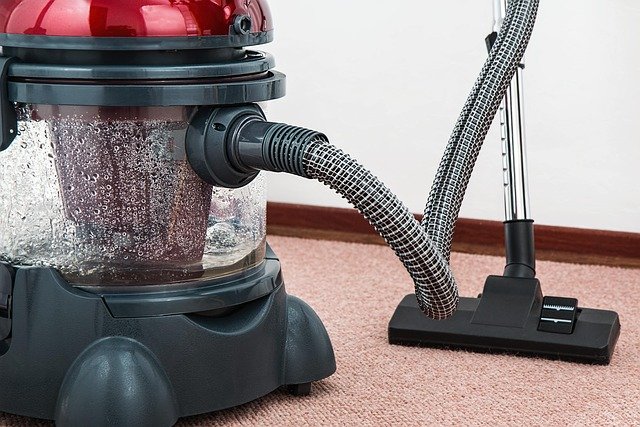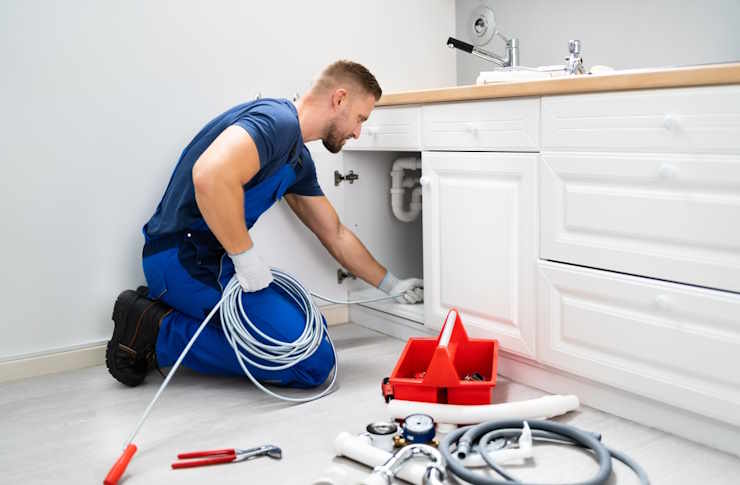The Hidden Culprit in Your Home: What Your Air Ducts Are Hiding
Behind the walls and beneath the floors of your home lies an intricate network of air ducts that circulate heated and cooled air throughout your living spaces. While these passages are essential for comfort, they can also harbor unwelcome guests: dust, allergens, mold, and other contaminants that may impact your indoor air quality and potentially your health. Understanding what lurks in these hidden pathways is the first step toward a cleaner, healthier home environment.

Your home’s air ducts serve as the respiratory system of your living space, continuously circulating air throughout every room. While they remain largely out of sight, these passageways can accumulate surprising amounts of debris over time. What exactly might be hiding in your ductwork, and why should this concern you? Let’s explore the often overlooked world of air ducts and discover why maintaining their cleanliness should be part of your regular home maintenance routine.
What Actually Accumulates in Your Air Ducts?
Air ducts naturally become collection points for a variety of substances that enter your home’s ventilation system. The most common contaminants include everyday household dust, which consists of tiny particles of dead skin cells, textile fibers, and outdoor dirt tracked in on shoes and clothing. Pet owners may find significant amounts of fur and dander trapped in their ductwork, while homes in humid climates might harbor mold spores and mildew.
More concerning are potential allergens like pollen, which can enter through open windows or on clothing, becoming trapped in your ductwork and recirculated throughout your home with each cycle of your HVAC system. In older homes or those that have undergone renovation, construction debris like drywall dust or sawdust might still be lingering in the ductwork years after the project’s completion.
How Dirty Air Ducts Affect Your Indoor Air Quality
The Environmental Protection Agency estimates that indoor air can be two to five times more polluted than outdoor air, a concerning statistic considering Americans spend approximately 90% of their time indoors. Your ductwork plays a significant role in this equation. When air passes through contaminated ducts, it can pick up particles and distribute them throughout your living spaces.
This recirculation process means that the same dust, allergens, and other contaminants are repeatedly introduced into your breathing air. For individuals with respiratory conditions like asthma or allergies, this continuous exposure can exacerbate symptoms and create chronic discomfort. Even those without pre-existing conditions may experience increased sneezing, coughing, or irritated eyes when duct contamination is severe.
Beyond respiratory concerns, dirty ducts can contribute to unpleasant odors throughout your home. Mold growth within ductwork can produce a musty smell that permeates living spaces, while pet dander and other organic matter can create their own distinctive odors over time.
Signs Your Air Ducts Need Professional Cleaning
Recognizing when your ductwork requires attention can help maintain optimal indoor air quality. One of the most visible indicators is excessive dust accumulation throughout your home, particularly on surfaces near air vents or shortly after cleaning. If you find yourself dusting more frequently than usual, your air ducts might be the culprit.
Visual inspection can also reveal problems. Remove a vent cover and look inside with a flashlight. If you observe significant dust buildup, visible mold growth, or evidence of pest activity, these are clear signals that cleaning is warranted. Similarly, if you notice dust or debris blowing out of air vents when the system activates, this indicates accumulated material within the ductwork.
Unexplained respiratory symptoms among household members can also suggest duct contamination. If family members experience increased allergy symptoms, coughing, or congestion while at home that improves when they’re elsewhere, your indoor air quality may be compromised by dirty ductwork.
The Professional Air Duct Cleaning Process
Professional duct cleaning involves specialized equipment and techniques designed to thoroughly remove accumulated contaminants. The process typically begins with an inspection using cameras to assess the level of contamination and identify any structural issues within the ductwork. This initial evaluation helps technicians determine the appropriate cleaning approach.
The main cleaning process generally employs negative air pressure technology, where powerful vacuum equipment is connected to the ductwork system. Various agitation devices—including brushes, air whips, and compressed air tools—dislodge debris from duct surfaces while the vacuum captures and removes the loosened contaminants. This combination of agitation and extraction ensures that dust and debris are removed rather than simply redistributed throughout the system.
Comprehensive cleaning also addresses other components of your HVAC system, including the supply and return air ducts, registers, grilles, diffusers, heat exchangers, cooling coils, drain pans, and the air handling unit housing. Some services may include the application of antimicrobial treatments to prevent mold growth, though this is typically an optional service.
Cost Considerations for Air Duct Cleaning Services
The investment in professional air duct cleaning varies based on several factors, including home size, system complexity, contamination level, and regional pricing differences. Understanding these variables can help homeowners budget appropriately for this maintenance service.
| Service Type | Average Cost Range | Factors Affecting Price |
|---|---|---|
| Basic Air Duct Cleaning | $300-$500 | Home size, number of vents, accessibility |
| Comprehensive HVAC System Cleaning | $450-$1,000 | Includes furnace, AC components, additional sanitizing |
| Specialized Contamination Removal | $700-$2,000 | Mold remediation, pest infestation treatment |
| Commercial Building Duct Cleaning | $1,000-$5,000+ | System size, building complexity, business hours constraints |
Prices, rates, or cost estimates mentioned in this article are based on the latest available information but may change over time. Independent research is advised before making financial decisions.
Most residential duct cleaning services include cleaning of the main supply and return ducts, branch lines, and registers throughout the home. Additional services like sanitizing treatments, mold remediation, or repairs to damaged ductwork typically incur extra costs. When requesting quotes, ask specifically what is included to ensure you’re comparing equivalent services.
The Benefits of Regular Air Duct Maintenance
Maintaining clean air ducts offers multiple advantages beyond improved air quality. Regular cleaning can enhance the efficiency of your HVAC system by removing obstructions that restrict airflow. When air moves freely through clean ducts, your heating and cooling equipment doesn’t need to work as hard to maintain desired temperatures, potentially reducing energy consumption and extending the lifespan of your system.
Clean ductwork can also contribute to a more comfortable living environment by improving temperature consistency throughout your home. When ducts are clogged with debris, certain rooms may receive inadequate airflow, creating hot or cold spots. Removing these obstructions helps ensure even distribution of conditioned air.
For households with pets, smokers, recent renovations, or water damage history, more frequent duct cleaning may be beneficial. The National Air Duct Cleaners Association suggests considering professional cleaning every 3-5 years for most homes, though specific circumstances may warrant more frequent attention.
Maintaining clean air ducts represents an often overlooked aspect of home care that can significantly impact your living environment. By understanding what accumulates in these hidden passages and taking appropriate maintenance steps, you can help ensure the air circulating throughout your home remains as clean as possible. Whether motivated by health concerns, energy efficiency, or simple cleanliness, paying attention to your air duct system is an investment in your home’s overall comfort and your family’s wellbeing.




